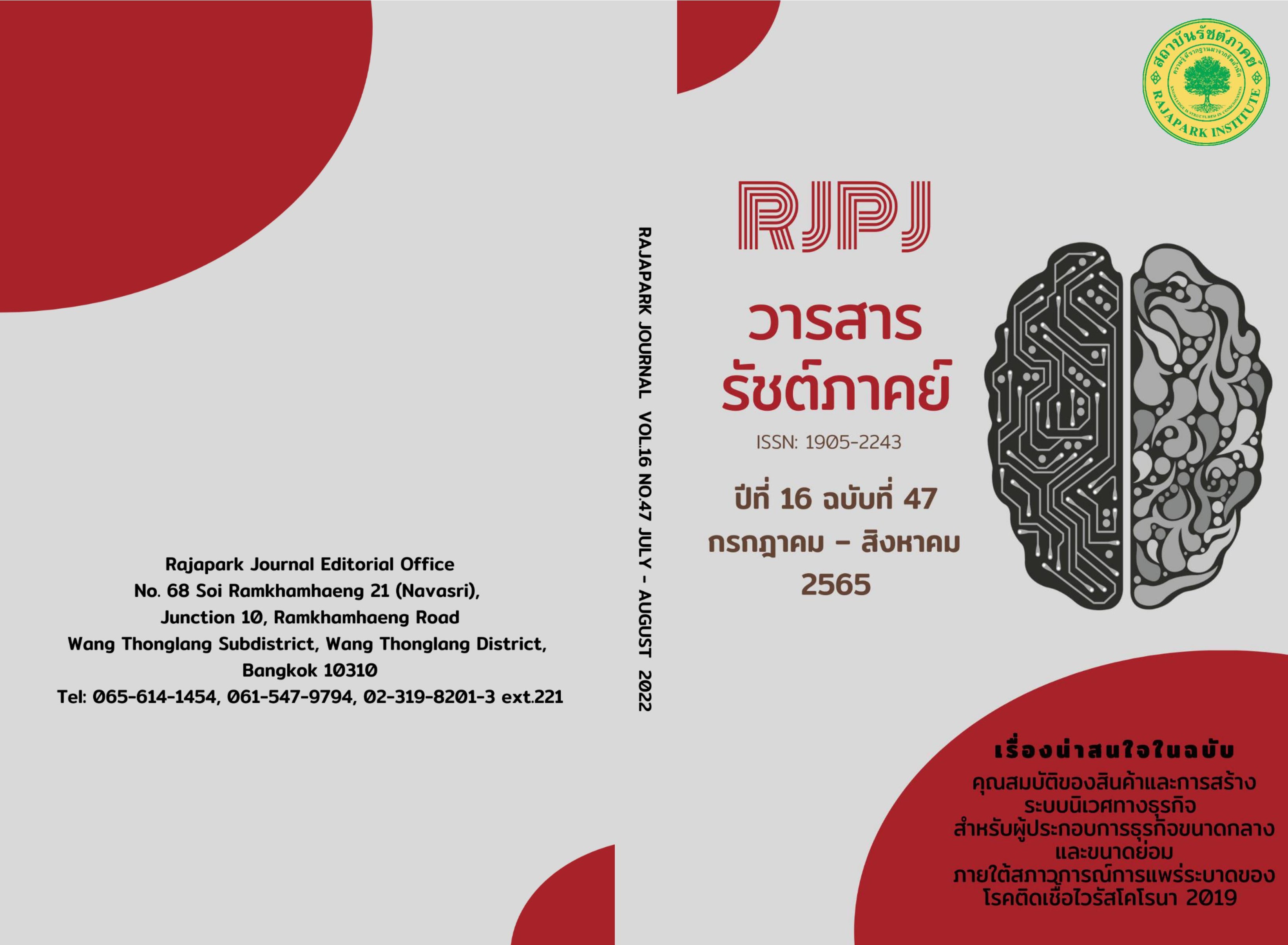Human Resource Management Influencing Efficiency the Performance of Personnel in Testing Laboratory Business
Main Article Content
Abstract
The objectives of this research were 1) To study the level of human resource management and the level of operational efficiency in the testing laboratory business; 2) To study the impact of human resource management on the performance of personnel in the testing laboratory business. It's mixed research. The quantitative sample group included 400 science and technology personnel and a qualitative sample group. By conducting in-depth interviews with only experts, namely, executives in 7 agencies related to the testing laboratory business. The results revealed that (1) The human resource management level consisted of 5 aspects: 1) recruiting and selecting personnel 2) training and development 3) benefits and compensation 4) performance evaluation and 5) morale building. found that in the overall level of human resource management at a moderate level (= 3.16) (2) Human resource management and operational efficiency in the testing laboratory business measured from 5 independent variables, namely 1) recruiting and personnel selection 2) training and development, 3) benefits and compensation 4) performance evaluation and 5) morale building. Overall, the level of opinion, the level of performance in the testing laboratory business was moderate (
= 3.16)
Article Details

This work is licensed under a Creative Commons Attribution-NonCommercial-NoDerivatives 4.0 International License.
Views and opinions appearing in the Journal it is the responsibility of the author of the article, and does not constitute the view and responsibility of the editorial team.
References
Akarathitipong, J. (2013). Documents supporting the teaching of human resource management. Faculty of Management Science, Phranakhon Si Ayutthaya Rajabhat University.
Dessler, G. (1998). Management: Leading people and organizations in the 21st century. Prentice-Hall.
Kaplan, R.S., & Norton, D.P. (2001). The St Focused Foused Organization. Havard Business School.
Khejaranun, N. (2003). The ultimate management strategy for the modern organization. Expertnet.
Khewpairee, W. (2007). Human resources in the organization. Thonburi Rajabhat University.
Kongchan, A. (2014). Human resource management. Phappim.
Kosi, I., Opoku-Danso, A., &. Sarpong Ofori, A.A. (2015). HRM practices and retention: an empirical study of senior staff of university of Cape Coast. International Journal of Technology Enhancements and Emerging Engineering Research, 3(11), 62-68.
https://citeseerx.ist.psu.edu/viewdoc/download?doi=10.1.1.1058.5570&rep=rep1&type=pdf
Laksana, S. (2009). Developing work efficiency. Phemsap Printing.
Liew, J.W., Abdul Rahman, R.H., Abdul Patah, S., & Abdul Rahman, A.A. (2016). The relationship between HRM strategies and intention to stay. Journal of Advanced Research in Social and Behavioral Sciences, 4(1), 90-98. https://www.akademiabaru.com/doc/ARSBSV4_N1_P90_98.pdf
Ministry of Industry. (2012). Industrial Product Standard TIS 31000-2555. http://www.fio.co.th.
Nadler, L. (1970). Developing Human Resources. Gulf.
National Statistical Office. (2022). Labor force in science and technology of Thailand. Classified by labor status and gender 2014-2020. http://statbbi.nso.go.th/staticreport/page/sector/th/20.aspx.
Rapeepisan, W. (2011). Basic knowledge of human resource management. Wichit Hatthakon.
Sereerat, S. et al. (1996). Organization and management. Dhammasarn.
Thieanphut, D. (1998). Human resource management in the next decade. Chulalongkorn University.
Warren, M.W. (1979). Training for Results: A Systems Approach to the Development of Human Resources in Industry. Addison-Wesley.
Wongrujirawanich, S. (2014). Consumer buying behavior. Sukhothai Thammathirat Open University.
Yamane, T. (1967). Statistics, An Introductory Analysis (2nd ed.). Harper and Row.
Yampuean, S. (2008). Factors Affecting the Efficiency of Employee’s Operations Asia Marine Service Public Company Limited[Master’s Thesisi, Srinakharinwirot University].


